Choosing the right skating ski length is crucial for optimal performance, efficiency, and control. This guide helps skiers select the perfect length based on their specific needs.
1.1 Importance of Proper Ski Length in Skating Skiing
Proper ski length is essential for balance, stability, and efficiency in skating skiing. A ski that is too short may lack glide and stability, while one that is too long can be difficult to maneuver. The right length ensures optimal performance, allowing skiers to maintain proper technique and generate power effectively. Weight, height, and skiing style are key factors in determining the ideal length, making it crucial for skiers to choose skis that match their body and skill level for the best experience.
1.2 Overview of Key Factors Influencing Ski Length

Key factors influencing ski length include weight, height, skill level, and skiing technique. Additionally, ski flex, sidecut, and camber play significant roles in determining the ideal length. Terrain and usage, such as racing or casual skiing, also impact the choice. Manufacturers often provide guidelines based on these variables, helping skiers make informed decisions. Balancing these factors ensures optimal performance, comfort, and control on the snow, making proper ski length selection a critical part of the skiing experience.

Understanding Key Characteristics of Skating Skis
Skating skis are designed for speed and agility, featuring a precise sidecut, responsive flex, and optimized length to enhance performance on groomed trails and competitive tracks.
2.1 Role of Sidecut in Ski Performance
The sidecut of skating skis plays a vital role in performance by determining edge grip and turn efficiency. A deeper sidecut enhances carving ability, allowing for tighter turns and better control on groomed surfaces; Conversely, a shallower sidecut offers more stability at higher speeds, making it ideal for racing and open trails. Proper sidecut design ensures optimal edge engagement, balancing maneuverability and stability for skiers of all levels. This feature is crucial for maximizing skating technique effectiveness.
2.2 Flex and Its Impact on Ski Handling
Flex refers to how a ski bends under pressure, significantly influencing handling and performance. Softer flex skis are easier to maneuver, ideal for lightweight skiers or those prioritizing agility. Stiffer skis offer better stability at high speeds, suited for heavier skiers or aggressive styles. Proper flex ensures efficient energy transfer during turns, enhancing overall skating technique. Balancing flex with ski length and camber is essential for optimal performance and responsiveness on the snow.
2.3 Length as a Critical Factor in Ski Selection
Ski length is a cornerstone of selection, directly impacting performance and control. Longer skis provide stability and glide efficiently, benefiting experienced skiers. Shorter skis offer agility and ease of turning, ideal for beginners or tight tracks. Proper length aligns with body weight and height, ensuring optimal energy transfer and maneuverability. It also affects posture and technique, making it essential to balance length with skill level and skiing style for the best on-snow experience.
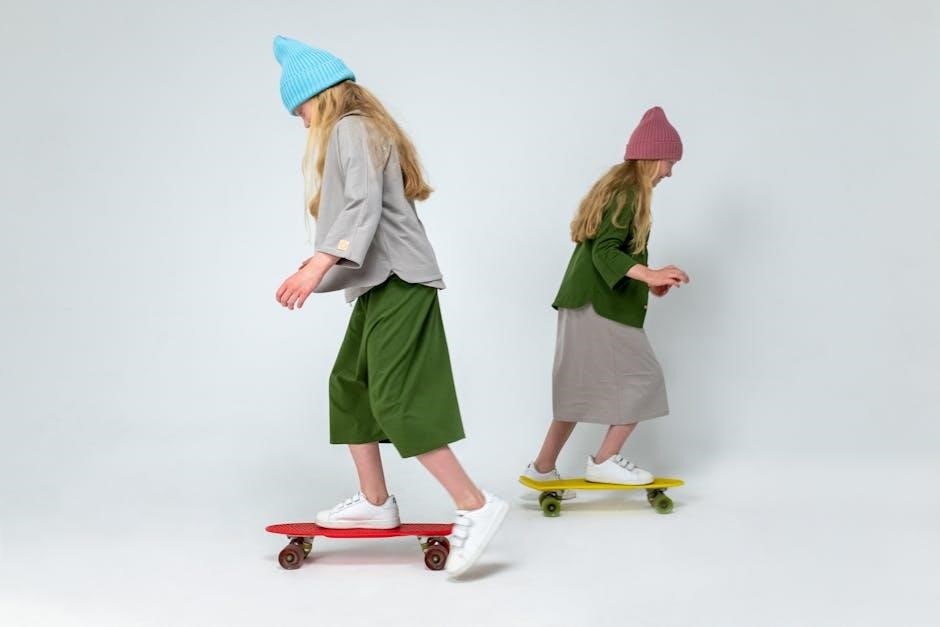
Determining the Right Ski Length for Skating
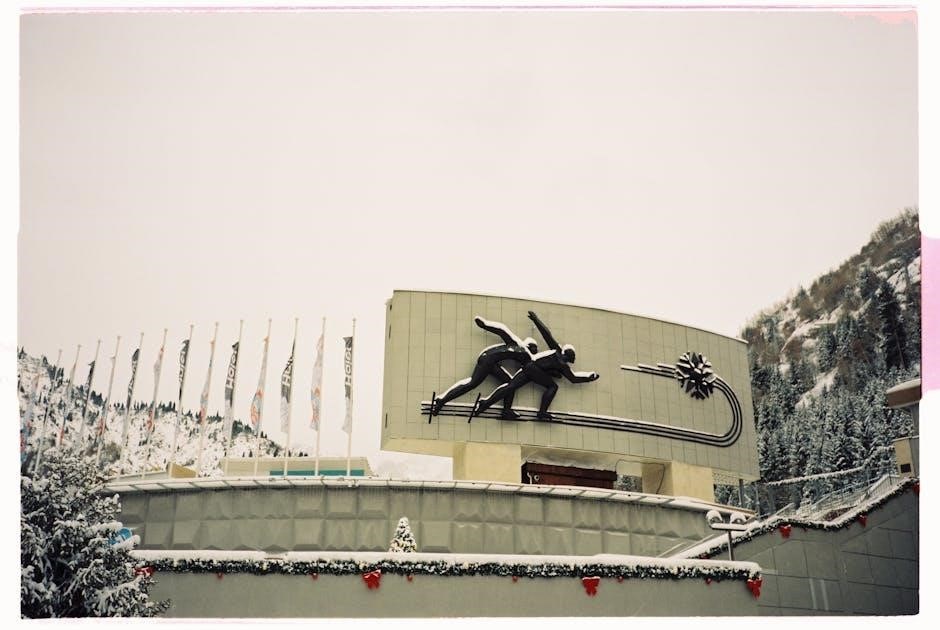
Ski length for skating balances stability, maneuverability, and glide. Skiers typically choose lengths between 40-50cm, adjusted for weight, height, and technique to optimize performance and control.
3.1 Weight and Height as Primary Determinants
Weight and height are key factors in determining ski length for skating. Heavier skiers benefit from longer skis for stability, while lighter skiers prefer shorter skis for easier control. Height also plays a role, with taller skiers often requiring longer skis to maintain proper technique and balance. Manufacturer charts typically provide guidelines based on these metrics, tailoring recommendations to individual needs for optimal performance and comfort on the snow.
3.2 Skill Level and Skiing Style Considerations
A skier’s skill level and style significantly influence ski length. Beginners benefit from shorter skis for easier control and maneuverability, while advanced skiers often prefer longer skis for speed and stability. Aggressive skiers may opt for longer lengths to enhance edge hold and power, whereas those with a more relaxed style might prefer shorter skis for better agility. Balancing skill level with skiing style ensures the best performance and enjoyment on the snow.
3.3 Manufacturer Guidelines and Recommendations
Manufacturers provide specific ski length guidelines based on height, weight, and skiing style. These recommendations are developed through extensive testing and cater to different skiing preferences, such as racing, recreational, or all-mountain skiing. Skiers should consult these guidelines as a starting point but also consider personal technique and comfort. Adjustments may be needed to match individual performance needs, ensuring the ski length aligns with both the manufacturer’s advice and the skier’s unique requirements for optimal performance.
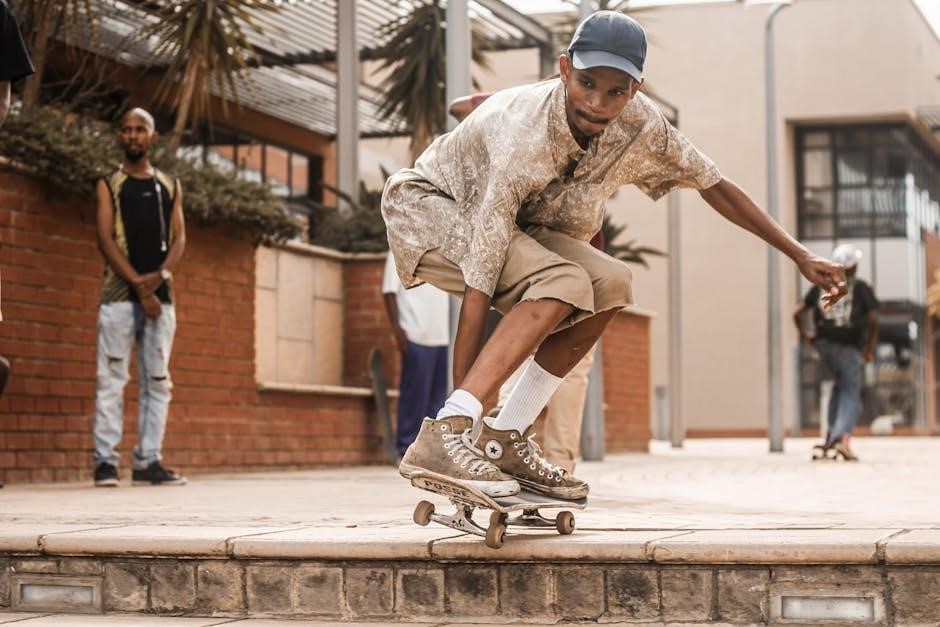
Ski Length and Technique in Skating Skiing
Ski length directly impacts technique, affecting maneuverability and stability. Proper length ensures efficient energy transfer, enabling better control and smoother movements during skating.
4.1 How Technique Affects Ski Length Requirements
A skier’s technique significantly influences the ideal ski length. Advanced skiers with refined movements may prefer shorter skis for agility, while those focusing on speed and stability might opt for longer skis. Technique affects how weight is distributed and how edges are engaged, impacting the ski’s responsiveness. Proper technique ensures efficient energy transfer, making it crucial to match ski length with the skier’s ability and style for optimal performance in skating skiing disciplines.
4.2 Balancing Stability and Maneuverability
The ideal ski length strikes a balance between stability and maneuverability. Longer skis enhance stability at higher speeds but may compromise agility. Shorter skis offer quicker turns and easier control, yet may lack stability. Skiers must weigh their needs: stability for speed versus maneuverability for agility. The right length supports both, ensuring confidence and control on the snow.
4.3 Impact of Terrain on Ski Length Choice
Terrain significantly influences ski length selection. On groomed tracks, longer skis provide better glide and stability. For rough, off-trail conditions, shorter skis enhance maneuverability and control. Mixed terrain requires a balanced length to adapt to varying surfaces. Skiers must consider where they primarily ski, as terrain dictates the optimal length for performance and ease of use. Manufacturer guidelines often account for terrain-specific needs, helping skiers choose appropriately.
Sizing for Different Skier Profiles
Skier profiles vary, requiring tailored ski lengths. Juniors need shorter, manageable skis, while adults balance performance and comfort. Elite athletes often prefer customized lengths for precision and speed.
5.1 Junior Skiers and Growth Considerations
Junior skiers require skis that accommodate growth while ensuring proper technique. Ski lengths for youth typically range from 120cm to 150cm, depending on height and weight. Shorter skis are easier to maneuver, fostering better control and skill development. Consider skis with adjustable bindings to extend use as the child grows. Prioritize lightweight materials for ease of handling. Renting or buying slightly longer skis can be cost-effective, but ensure they remain manageable for the young skier’s ability level and physical strength.
5.2 Adult Skiers and Performance Needs
Adult skiers should choose ski lengths that align with their height, weight, and skiing style; Recreational skiers may prefer shorter skis for easier maneuverability, while competitive skiers opt for longer skis to maximize speed and efficiency. Ski length impacts technique, with longer skis offering stability at higher speeds. Consider sidecut and flex to match skiing preferences. Proper fitting ensures optimal performance, whether skiing casually or racing. On-snow testing can help determine the ideal length for individual needs.
5.3 Elite Athletes and Customized Lengths
Elite athletes often require customized ski lengths tailored to their specific needs, technique, and racing style. Manufacturers offer personalized options, allowing precise adjustments for optimal performance. Factors like height, weight, and stride mechanics are carefully considered. Racing conditions, such as sprint or distance events, also influence length selection. Expert fitters and coaches play a crucial role in fine-tuning equipment. Customized skis ensure peak performance, enabling athletes to achieve their best results in competitive settings.
Flex and Camber in Relation to Ski Length
A ski’s flex and camber are closely tied to its length, with longer skis typically offering a stiffer flex and more pronounced camber for improved performance.
6.1 Understanding Flex and Its Relationship with Length
Flex refers to how a ski bends under pressure, directly impacting performance. Longer skis are generally stiffer, providing stability at higher speeds, while shorter skis are more flexible, enhancing maneuverability. The right flex ensures optimal energy transfer and control, as a ski that’s too stiff or too soft can hinder performance. Proper flex is crucial for skiers to maintain balance and responsiveness, especially during dynamic movements. Weight, skiing style, and technique also influence the ideal flex-to-length ratio, making it a critical factor in ski selection.
6.2 Camber Profile and Ski Responsiveness
The camber profile significantly influences a ski’s responsiveness. Camber is the upward curve of the ski in the middle when uncompressed. A higher camber provides more spring-like responsiveness, enabling efficient energy transfer during each stride. In skating, a moderate camber is often preferred for balanced performance, offering both quick turns and stability. The camber profile works in tandem with ski length to determine how the ski interacts with the snow, affecting glide and maneuverability. Proper camber enhances overall skiing efficiency and control.
6.3 Matching Flex and Length for Optimal Performance
Matching flex and length is crucial for optimal skiing performance. A ski’s flex refers to its ability to bend under pressure, which affects responsiveness and control. A ski that is too stiff or too soft for its length can hinder performance. Properly matching flex and length ensures balanced energy transfer, stability, and maneuverability. For skating, a mid-stiff flex is often ideal, providing the right blend of power and precision. Always consult manufacturer guidelines to ensure the flex complements the ski length for your needs.
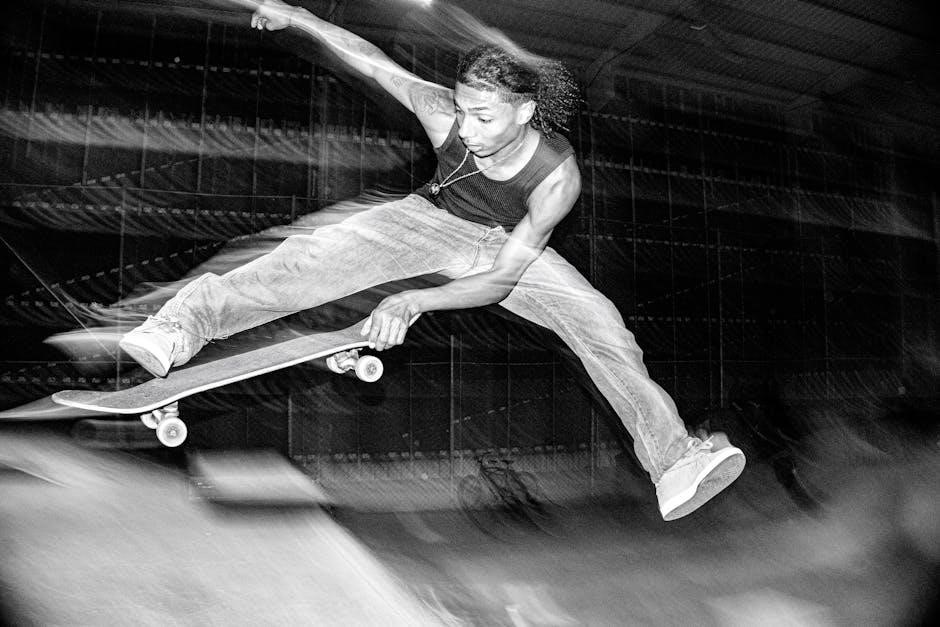
Testing and Adjusting Ski Length
Testing on-snow is essential to determine the ideal ski length. Adjustments may be needed based on performance, conditions, and personal preference for optimal skiing experience.
7.1 On-Snow Testing for Ideal Length
On-snow testing is crucial to determine the perfect ski length. It allows skiers to assess acceleration, turning ease, and control under real conditions. Testing at varying speeds and terrains helps identify how the skis perform. Pay attention to stability, maneuverability, and responsiveness. Professional feedback can also provide insights. This hands-on approach ensures the chosen length aligns with the skier’s technique, weight, and skiing style, maximizing performance and comfort on the snow.
7.2 Adjusting Length for Different Conditions
Adjusting ski length based on conditions can enhance performance. In soft or deep snow, slightly longer skis improve float and glide. For hardpack or icy surfaces, shorter skis may offer better control and agility. Varied terrain, such as hills or flats, might require minor length tweaks. Skiers should test adjustments in similar conditions to ensure optimal performance without sacrificing technique. Small changes can make a significant difference in responsiveness and overall skiing experience.
7.3 Fine-Tuning for Personal Preference
Personal preference plays a significant role in finalizing ski length. Skiers may prefer slightly shorter or longer skis based on their comfort, turning style, and weight distribution. Fine-tuning involves small adjustments, often 1-2 cm, to match individual skiing habits. For example, aggressive skiers might opt for shorter skis for quicker turns, while those prioritizing stability may prefer longer ones. Testing and feedback from experts can help refine these adjustments for a tailored fit and enhanced performance.
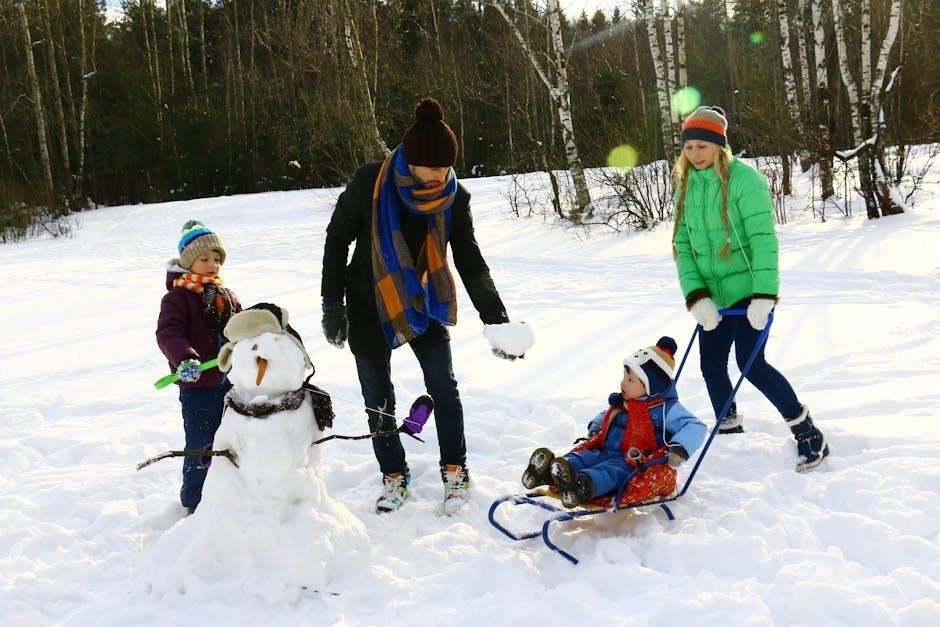
Common Mistakes in Choosing Ski Length
Common mistakes include ignoring weight, height, and skill level guidelines, as well as not testing skis on snow before purchase. Many skiers also overlook terrain-specific needs.
8.1 Overlooking Weight and Height Guidelines
Many skiers neglect to consider their weight and height when selecting ski length, leading to poor performance and control. Heavier individuals require longer skis for better floatation, while lighter skiers may prefer shorter skis for agility. Height plays a role in leverage and balance, with taller skiers often benefiting from longer skis. Ignoring these guidelines can result in skis that are too short or too long, affecting stability and maneuverability. Always consult manufacturer charts and expert advice for accurate sizing;
8.2 Ignoring Skill Level and Technique
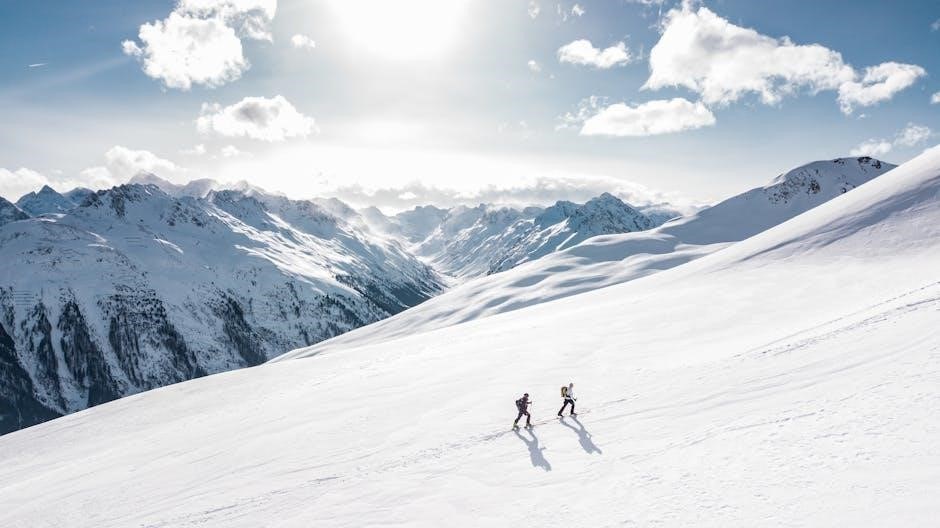
Disregarding skill level and technique when choosing ski length can significantly impact performance. Beginners may find longer skis difficult to control, while advanced skiers need sufficient length for powerful strides. Technique also plays a role, as skiers with poor form may struggle with longer skis. Neglecting these factors leads to poor glide, reduced stability, and increased fatigue. Always consider your ability and technique when selecting ski length to ensure optimal performance and control on the snow.
8.3 Not Considering Terrain and Usage
Overlooking terrain and skiing conditions is a critical mistake when selecting ski length. Skis for groomed tracks differ from those for backcountry or icy surfaces. Racing skis are longer for speed, while shorter skis excel in tight spaces or variable snow. Ignoring these factors can lead to reduced performance, poor control, and increased effort. Always match ski length to your primary skiing environment and conditions for optimal results and a more enjoyable experience on the snow.
Maintenance and Its Impact on Ski Performance
Proper maintenance is crucial for maximizing skating ski performance and longevity. Regular care ensures optimal glide, control, and durability, enhancing the skier’s experience and efficiency on the snow.
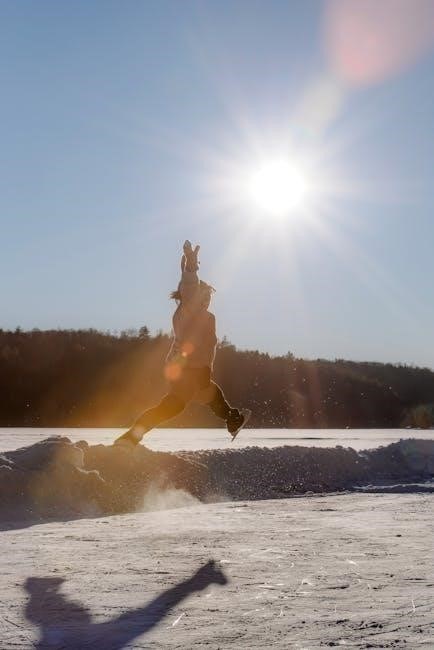
9.1 Waxing and Edging for Optimal Glide
Waxing and edging are essential for maintaining skating ski performance. Wax reduces friction, enhancing glide and speed, while proper edging ensures precise control and carving ability. Regular waxing with the right temperature-specific wax prevents snow from sticking and keeps the base healthy. Edging should be done with precision to maintain sharpness without over-sharpening, which can compromise stability. Both practices work together to ensure optimal glide, responsiveness, and longevity of the skis, making them crucial for both recreational and competitive skaters.
9.2 Storage and Transportation Best Practices
Proper storage and transportation of skating skis are vital to maintain their performance and longevity. Use a protective ski bag or hard case to prevent damage during travel. Store skis in a cool, dry place, away from direct sunlight, to avoid warping or delamination. Avoid extreme temperature changes and ensure skis are clean and dry before storage. For extended periods, apply storage wax to protect the base. Always handle skis by the middle or ends to prevent bending or scratches.
9.3 Repairing and Maintaining Ski Integrity
Regular inspections and timely repairs are essential to maintain ski integrity. Check for scratches, delamination, or edge damage and address them promptly. Use wax to fill minor scratches and sharpen edges for consistent performance. For deeper damage, apply a base repair material and let it cure. Avoid using skis with significant damage, as this can affect stability and control. Proper maintenance ensures optimal performance and extends the lifespan of your skating skis.
Proper ski length selection is crucial for performance, stability, and enjoyment in skating skiing. Consider weight, height, skill level, and technique to find the ideal fit, ensuring a balance between stability and maneuverability while adapting to terrain demands for optimal results.
10.1 Recap of Key Considerations
When selecting skating ski length, prioritize factors like weight, height, and skill level. Technique and skiing style also play a role, as they influence stability and maneuverability. Consider the terrain you’ll ski on most often, as this affects the ideal length. Manufacturer guidelines provide a starting point, but personal preference and on-snow testing can refine your choice. Balancing these elements ensures optimal performance, comfort, and enjoyment on the snow.
10.2 Final Tips for Choosing the Right Length
Test skis on snow to confirm fit and performance. Seek expert advice to refine your choice. Consider junior skiers’ growth when selecting length. Prioritize skis that match your skiing style and terrain preferences. Keep manufacturer guidelines as a baseline but adjust based on personal comfort and technique. Fine-tune your selection to ensure a balance between stability and maneuverability for an optimal skiing experience.
Additional Resources and Further Reading
Explore manufacturer websites, online forums, and tutorial videos for comprehensive guides and expert tips on selecting the right skating ski length. Stay updated with the latest trends and expert advice to make informed decisions.
11.1 Manufacturer Websites and Guidelines
Visit Salomon, Rossignol, and Atomic websites for detailed ski length charts. These resources often include size calculators and fitting guides tailored to skating skis. Review their product descriptions and FAQ sections for insights on choosing the right length. Many manufacturers also provide video tutorials and buyer’s guides to help skiers make informed decisions. Always cross-reference their guidelines with your height, weight, and skill level for the best fit. Additionally, check customer reviews for real-world feedback on specific models.
11.2 Community Forums and Expert Advice
Engage with online forums like Reddit’s skiing communities or specialized platforms for cross-country skiers. These spaces offer valuable insights from experienced skiers and coaches. Experts often share personalized tips and recommendations based on real-world experiences. Participating in these discussions can provide tailored advice for choosing the right ski length. Many forums also feature thread archives with detailed discussions on technique and equipment. Don’t hesitate to ask questions—experienced skiers are often eager to help others make informed decisions.
11.3 Videos and Tutorials on Ski Length Selection
YouTube and Vimeo host numerous video tutorials and guides focused on skating ski length selection. These resources provide step-by-step instructions and visual demonstrations to help skiers understand how to choose the right length. Many videos feature expert coaches and professional skiers sharing practical tips and real-world examples. Additionally, some manufacturers offer interactive webinars and demo videos to explain their sizing recommendations. These visual tools make complex information more accessible and easier to apply when selecting skis.

Be First to Comment